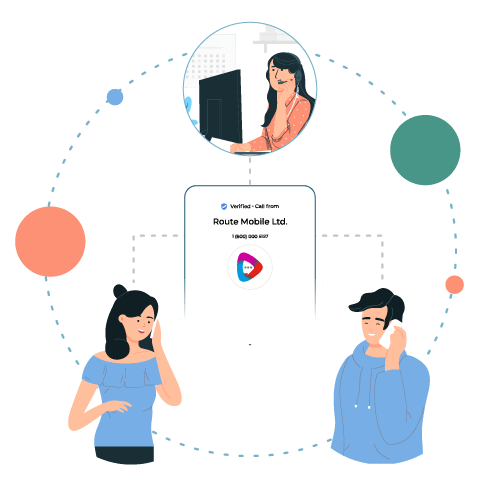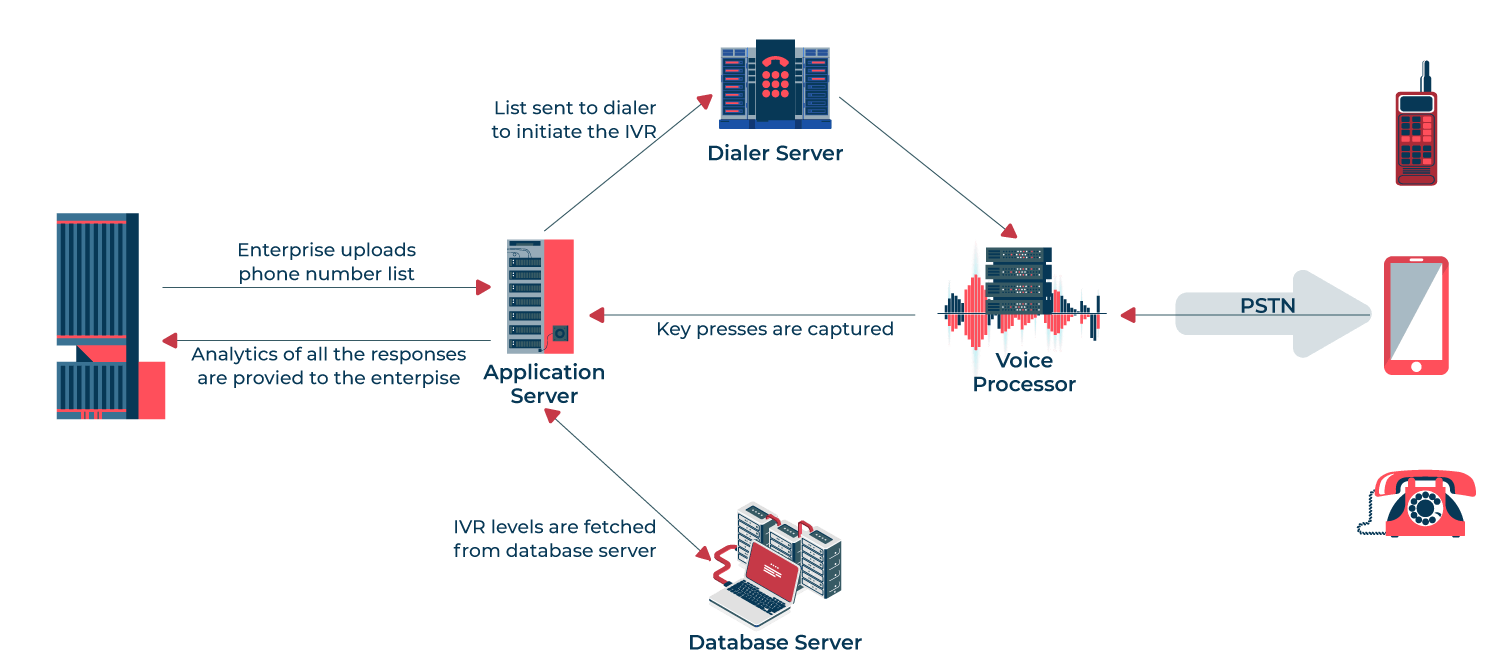Route Mobile’s Voice API combines AI and algorithms to call a predefined list of customer contacts and relay promotional messages, reminders, or one-time-passwords (OTP). The automated dialer creates, lists and dials out to multiple calling groups / lists at the same time, allowing you to improve customer loyalty and retention, accelerate new customer acquisition, drive operational efficiency and reduce cost.
Get StartedFeatures & Benefits of Voice API

Product Trivia
60%of marketing managers in Fortune 500 companies say automated telemarketing is “Very Effective”
How Voice API works

FAQs on Voice API
A Voice API is an application programming interface that enables developers to integrate voice-related features and functionality into their applications, services, or products.
Voice APIs can be used for a wide range of applications, including voice recognition, text-to-speech conversion, voice authentication, virtual assistants, and interactive voice response (IVR) systems.
Voice APIs typically work by sending and receiving voice data and commands over the internet. They process voice input and provide responses or perform actions based on the developer’s instructions.
Most Voice APIs support popular programming languages like JavaScript, Python, Ruby, and Java. The choice of language often depends on the specific API and the developer’s preferences.
Voice APIs prioritize security, using encryption and authentication mechanisms to protect voice data and user privacy. Developers must implement security best practices when integrating these APIs.
Integrating a Voice API typically involves registering for API access, obtaining API keys, and following the API documentation to make API calls within your application’s code.
The cost of using Voice APIs varies depending on the provider and the specific usage, such as the number of API calls or the volume of data processed.
Voice APIs may have usage limits, rate limits, and restrictions on the number of concurrent calls. These limitations can vary among providers.
Yes, Voice APIs are designed to be platform-agnostic and can work with a variety of devices, including smartphones, web applications, IoT devices, and more.
Yes, many Voice APIs support multiple languages and dialects, making them suitable for creating multilingual and international applications.





